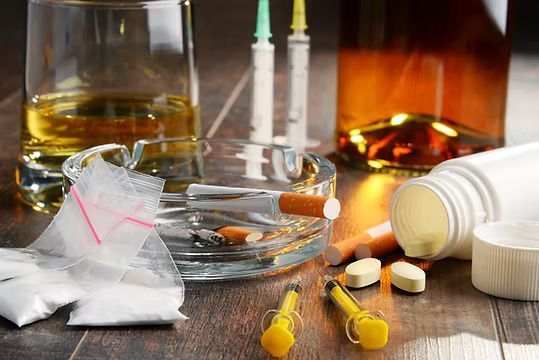Substance Abuse Treatment In Thornton, Brighton, and Commerce City, CO
Understanding Substance Abuse Disorder
Causes, Effects, and Commonly Abused Substances
Substance abuse disorder, also known as substance use disorder, is a complex and chronic mental health condition characterized by the persistent use of drugs or alcohol despite their adverse consequences.
It is a serious condition that affects people of all ages, genders, and races and requires professional treatment to manage and overcome.
What are Substances?
Substances refer to drugs, alcohol, or any other chemical that alters the brain and body’s normal functioning. They can be legally prescribed medications, over-the-counter drugs, or illicit drugs. Commonly abused substances include alcohol, tobacco, marijuana, opioids, stimulants, and sedatives.
The Difference Between Substance Use, Misuse, and Substance Use Disorder
Substance use refers to the occasional or recreational use of substances without significant negative consequences. Substance misuse, on the other hand, refers to using substances in a way that can cause harm to the user or others, such as using more than prescribed or sharing medication with others.
Substance use disorder, on the other hand, is a diagnosable mental health condition characterized by the persistent use of substances despite the negative results of doing so.
The Difference Between Substance Use Disorder and Addiction
Substance use disorder is a medical diagnosis that describes a range of symptoms related to drug or alcohol use. In contrast, addiction is a more complex and chronic condition that involves physical dependence, tolerance, and compulsive drug-seeking behavior.
While substance use disorder can progress to addiction, not all individuals with substance use disorder meet the criteria for addiction.
Who Does Substance Use Disorder Affect?
Substance use disorder can affect anyone, regardless of their age, gender, ethnicity, or socioeconomic status. However, some groups may be more vulnerable to developing substance use disorder, such as individuals with a history of trauma, mental health conditions, or a family history of addiction.
How Common is Substance Use Disorder?
This is a common mental health condition that affects millions of people worldwide. According to the National Survey on Drug Use and Health, approximately 20 million Americans aged 12 or older had a substance use disorder in 2020, with opioids and alcohol being the most commonly abused substances.
The Most Common Substance Use Disorder
Alcohol use disorder is the most common substance use disorder in the US, affecting approximately 14.1 million adults aged 18 or older. It is a chronic and progressive condition that can lead to a range of negative consequences, such as liver disease, pancreatitis, or cognitive impairment.
Signs and Symptoms of Substance Use Disorder
Symptoms of substance use disorder can vary depending on the type of substance and the severity of the condition. Common signs and symptoms of substance use disorder include:
Common Signs and Symptoms of Substance
- Using substances in larger amounts or for longer than intended.
- Failed attempts to cut down or control substance use.
- Spending a significant amount of time obtaining, using, or recovering from substance use.
- Cravings or urges to use substances.
- Continued use despite negative consequences, such as health problems, legal issues, or relationship difficulties.
- Withdrawal symptoms when stopping or reducing substance use.
How Does Substance Use Disorder Develop?
Brain chemistry
Substance use can alter the brain’s reward center, making it more difficult to control substance use and leading to compulsive drug-seeking behavior.
Mental health problems
Individuals with mental health conditions, such as anxiety or depression, may be more likely to develop substance use disorder as a way to cope with their symptoms.
Genetics
Genetic factors can contribute to an individual’s risk of developing substance use disorder, particularly if there is a family history of addiction.
Exposure to substances
Easy access to substances or exposure to them can increase an individual’s risk of developing substance use disorder later.
Negative childhood experiences
Traumatic events during childhood, such as abuse, neglect, or exposure to substance use, can increase an individual’s risk of developing substance use disorder later in life
Diagnosis of Substance Use Disorder
Substance use disorder diagnosis is typically based on a set of criteria outlined in the Diagnostic and Statistical Manual of Mental Disorders (DSM-5). Some of the criteria used to diagnose substance use disorder include:
- Consuming substances in greater quantities or for longer than recommended.
- Unsuccessful attempts to reduce or regulate substance use.
- Getting and using substances over an extended period of time.
- Having urges or cravings to use drugs.
- Continued substance use in spite of unfavorable effects, such as health issues, legal troubles, or interpersonal relationship difficulties.
- Withdrawal symptoms.
To be diagnosed with substance use disorder, an individual must meet at least two of the criteria within a 12-month period. The number of criteria determines the severity of the disorder met, with mild, moderate, and severe classifications.
Treatment for Substance Use Disorder
Some of the most common treatments for substance use disorder include:
- Cognitive behavioral therapies: These therapies focus on identifying and changing negative thought patterns and behaviors related to substance use. Examples of cognitive-behavioral therapies include motivational interviewing, dialectical behavior therapy, and contingency management.
- Detoxification: Detox is the process of removing substances from the body, typically in a medically supervised setting. It is often the first step in substance use disorder treatment and can help manage withdrawal symptoms and reduce the risk of complications.
- Medication-assisted treatment involves using medications to manage cravings, reduce withdrawal symptoms, and prevent relapse. Examples of medications used in medication-assisted treatment include methadone, buprenorphine, and naltrexone.
In addition to these treatments, other supportive therapies may be used to help individuals with substance use disorder, such as group therapy, family therapy, and 12-step programs.
Don’t Be Afraid to Ask for Help
If you or a loved one is struggling with substance use disorder, it is important to seek professional help. John Maret Counseling offers online mental health counseling for individuals struggling with all kinds of mental health disorders, including substance use disorders. Our licensed therapists offer individualized treatment plans tailored to each individual’s unique needs and goals. Contact us today to learn more about our services and start your journey to recovery.



